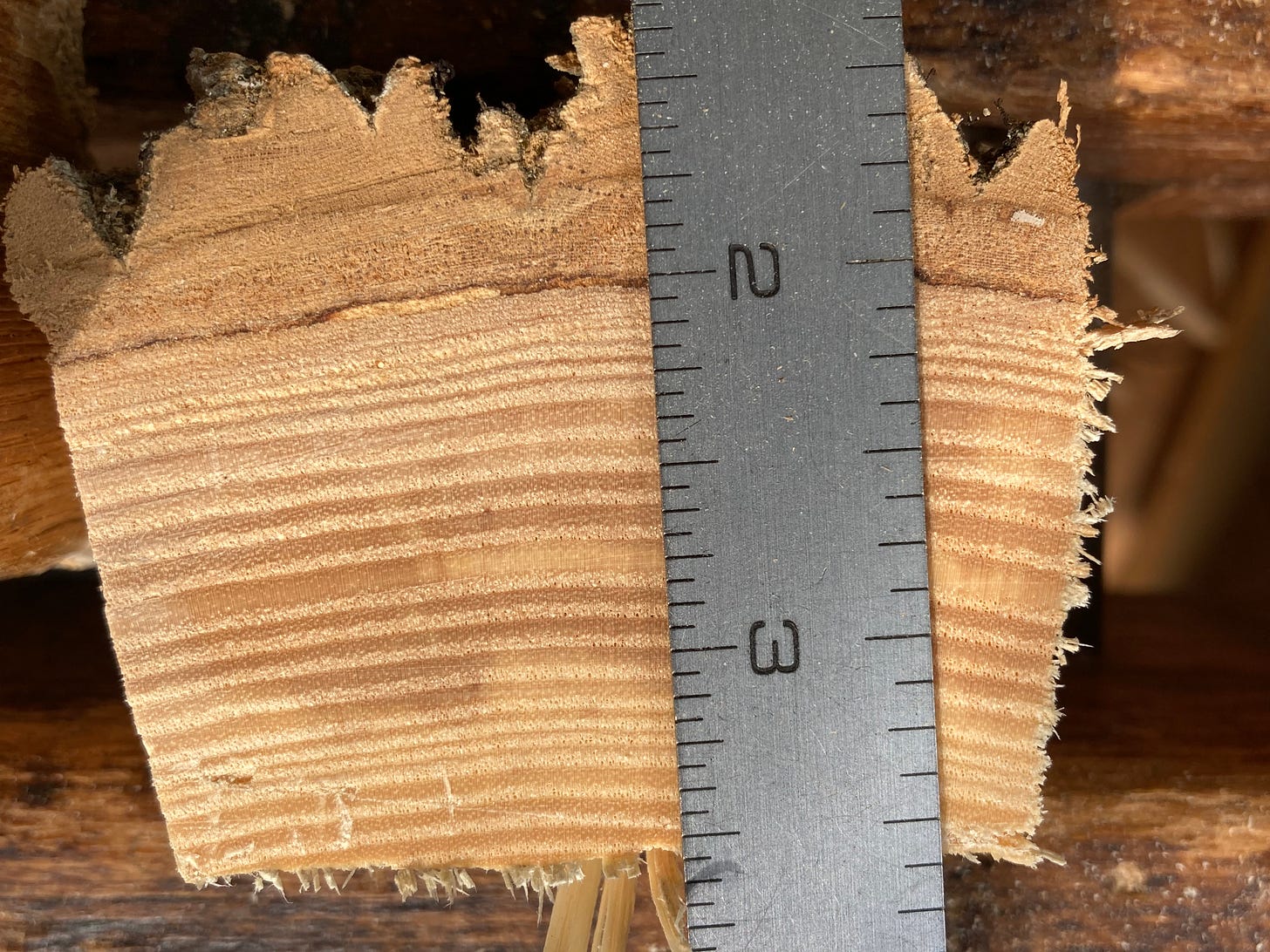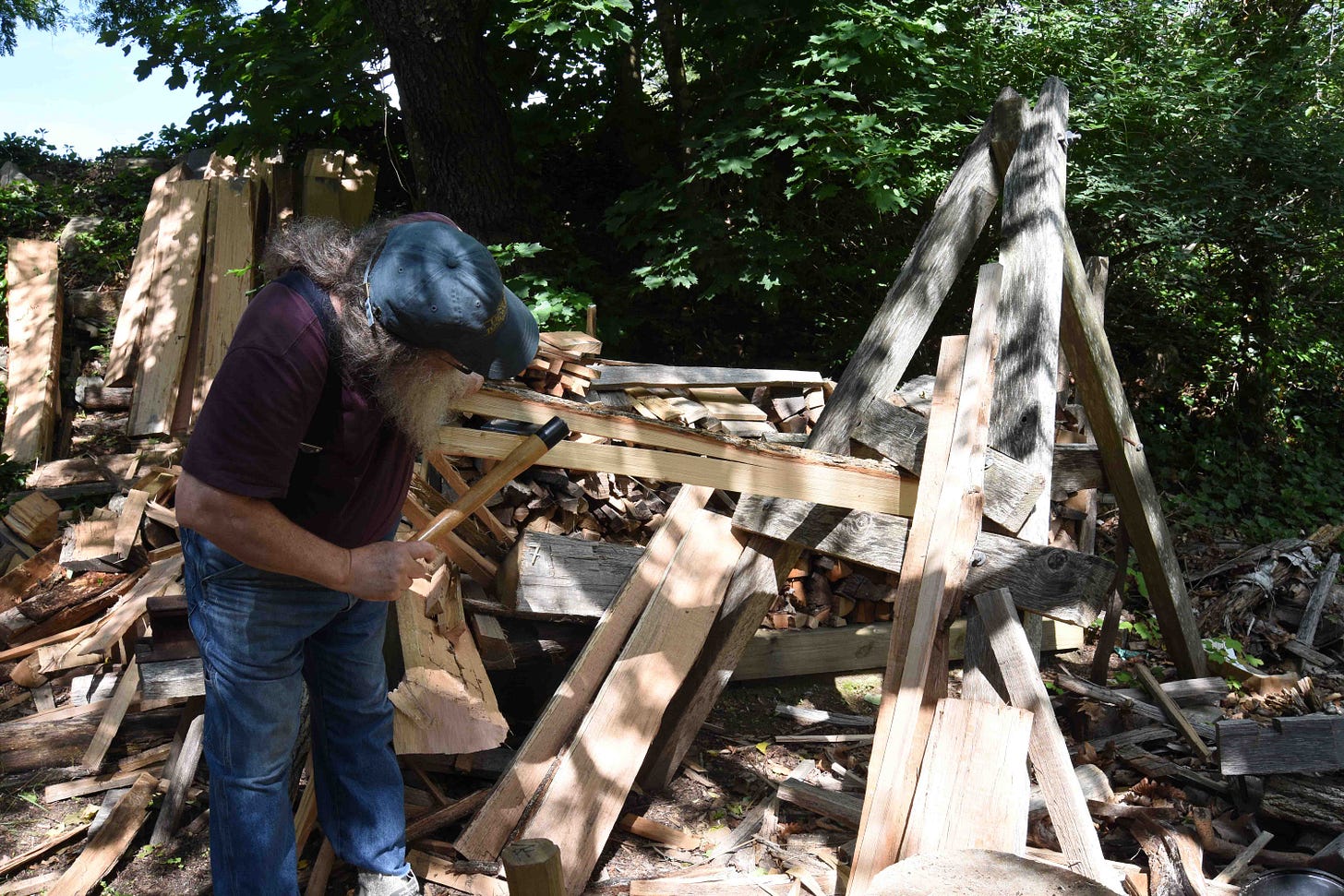That might be so, but for someone using green wood it can get tricky. I spent a bunch of time last week splitting up stock from a new red oak log - headed toward drawer bottoms. I made 20 boards roughed out at 1/2” thick. Widths were between 8”-10”. Now those are stashed overhead, in a makeshift rack that I hope is temporary, to dry before I start cutting and fitting them to the drawers.
So I turned my attention to the last few pieces I had of an ash log I got in mid-winter. The ash has been on my mind as the weather has begun to warm up - it doesn’t store well in the log in warmer months. I dug some out and began splitting it up & prepping it for chairmaking; both ladderbacks and Windsors.
The indicator that the wood has begun to deteriorate is the color of the white sapwood. It begins to show splotchy brown areas. What I have found in working some of that material years ago is that it’s lost its strength. In the photo below all that wood under the bark should be a very pale white color.
You can see more of the discoloration here:
Today & yesterday I split one 60” quarter into eighths and then began looking those sections over. Chair parts mostly; bending stuff from the best sections, Windsor chair legs and stretchers from thicker sections. All the stuff that gets too small can usually become ladderback rungs - shaved just over 5/8”. I even pounded out some ash splints for basketmaking.
Most of the affected wood was the first inch or so under the bark. So I split that off first. You might be able to see that the split is running up toward the bark - that wood up there is weaker than the wood below the split. That’s why it’s running unevenly. If I had made this same split back when the log was fresh, it would have run straight down the length of the stock. The solution (other than not leaving it hanging around so long) is to come in & split from the other end. They meet in the middle. Then toss the top section with the bark and effected wood and get on with it.
Like I said, I made a couple of Windsor chair arm blanks from the best sections; here I’m shaving a continuous arm 59 1/2” long. Once there’s a few things like that I’ll set up the steam box and get to bending them.
A day & 1/2 full of back & forth. I got up a few times to sweep up the shavings. They’ll take over one’s life. A couple of turning blanks to fill out a set of chair legs - some rungs, the arms and a coil of basket splints. Those are one of the most magical things I know in woodworking.
One day I was doing a hands-on demo with some young schoolkids - something I never did/do. This time was the exception. I showed them how I use a 3-lb sledge hammer to pound apart the growth rings and then peel layer after layer off the wood.
I told this one little girl “it’s like a time machine - here’s this year, and then under that is last year and on & on - here’s the year you were born…” - she looked at me like I was stupid then said “Time machines go forward.” I told her when you’re my age you want a time machine that goes back, not forward…
A couple of years ago I made a series of videos about basket making. Not the best videos, but I think they get the basic methods across. Many years ago baskets were one of my mainstays, now I like to make a couple of batches each year. Usually in the summertime. https://www.youtube.com/playlist?list=PLB2LcmbKpkcbCu8QgZ3XIRhyhw9PZdSXk












Basket weaving is great fun. I've never made my own ash splints though.
Hi Peter, a question: From the first picture, it sure looks like a good portion of that split section is heartwood. I realize that HW is not ideal however, for drawer bottoms, would it normally be okay? Thanks!